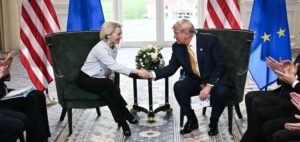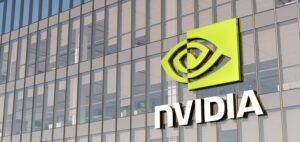Prime Highlights
- Nvidia receives U.S. clearance to resume shipments of its “H20 GPU” to China after previous export restrictions.
- Company also launches a new RTX Pro GPU tailored for China under current U.S. compliance rules.
Key Facts
- Nvidia’s halted exports had already cost it a revenue loss of $15 billion and an inventory write-down of $5.5 billion.
- China represents some 13% of Nvidia’s yearly global sales, which amount to approximately $17 billion.
Key Background
Nvidia has said publicly that it is resuming the sale of its “H20 GPU” to China following U.S. regulatory approval. The purpose-built AI graphics processing unit on the high-end Hopper architecture, H20, had itself been engineered to comply with earlier U.S. export restrictions. Stricter export controls introduced in April, however, put even that version on hold, having a significant impact on Nvidia’s sales pipeline and valuation of inventory. The company deducted $5.5 billion in stock and missed out on nearly $15 billion in projected sales.
Re-opening exports is yet another move in the constant battle between U.S. national security policy and foreign commercial interests of the global semiconductor industry. China remains a significant revenue source for Nvidia, contributing to about 13% of its overall revenue. Nvidia has been cleared by the Department of Commerce to regain its Chinese AI hardware market share, and H20 exports are set to re-open at any time.
At the same time, Nvidia introduced a new RTX Pro GPU model that complies with existing U.S. export controls. The chip is designed for the Chinese economy and includes smart logistics and industrial automation use cases. Although it is based on the advanced Blackwell architecture, its specifications are cut back to compliance levels. In this way, Nvidia is current on the commercial side in China without breaking U.S. regulatory measures.
Nvidia Chief Jensen Huang has also been diligently at diplomatic and strategic diplomacy, traveling to Washington and Beijing recently. His efforts reflect the company’s own efforts to tread a fine tightrope between fulfilling U.S. national security imperatives and maintaining its dominance in AI infrastructure markets. Although Nvidia has been able to reassert some lost territory, geopolitical uncertainty remains regarding long-term U.S.-China tech relations. But the easing of the restrictions is a subdued easing of patterns of trade, bringing temporary relief to chipmakers like Nvidia who are working in this high-stakes atmosphere.
Read More: WestJet Flight Sparks Emergency Evacuation at Vancouver Airport After Engine Fire




